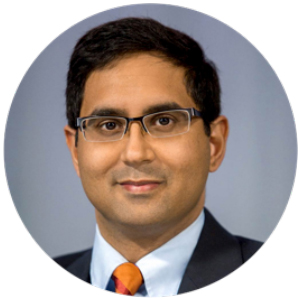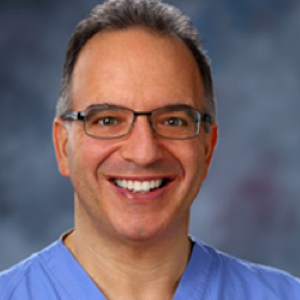Often, it is when we take a step back and look at the big picture of the health care industry that we most clearly see the urgent need for true interoperability and can reaffirm the real value that CommonWell services are already bringing to providers and their patients. Last Tuesday, HIMSS provided us with such an opportunity in a webinar co-presented by our executive director, Jitin Asnaani, and Dr. Arthur Lauretano, Chief Medical Officer of Circle Health.
 For those who were unable to join the webinar entitled “Building Patient-Centered Data Exchange into the EHR,” Jitin shared the barriers hindering scalable, nationwide, vendor-neutral interoperability. In short, the situation is this: while patients typically expect that their providers have access to their previous health records before they receive care, in reality this is not often the case. With the average person seeing more than 18 providers in their lifetime, this disparity presents a problem of significant magnitude.
For those who were unable to join the webinar entitled “Building Patient-Centered Data Exchange into the EHR,” Jitin shared the barriers hindering scalable, nationwide, vendor-neutral interoperability. In short, the situation is this: while patients typically expect that their providers have access to their previous health records before they receive care, in reality this is not often the case. With the average person seeing more than 18 providers in their lifetime, this disparity presents a problem of significant magnitude.
As Jitin noted, the cause of this lack of interoperability can be attributed to a number of competing priorities within government, across the health IT vendor community, at the provider organization level and even at the physician level. Historical solutions have been not scalable, depending at best on expensive one-off or regional-only connections, or leaning far too much on awkward and unreliable processes such as interrogating the patient to glean some sort of usable information about their medical history. At this same time, physicians are busy treating patients and dealing with a multitude of other operational and clinical issues and do not have the time or resources to utilize data exchange solutions that disrupt their workflow.
Enter CommonWell, which by contrast allows providers to know where their patients have been and access that data within their existing workflows. Jitin explained that person-centered exchange focuses on empowering providers and individuals at the time of care (and even beforehand!) across the care continuum. CommonWell allows data to follow the patient by creating a virtual table of contents of all the available data for the patient, enabling the patient’s records to be easily and securely located, matched, linked and accessed, and effectively organizing it for more efficient long-term reference across the care continuum.
 We are already seeing this play out across our 8,000+ live provider sites, and Dr. Lauretano was able to detail his own experience of using CommonWell services as a practicing physician at one of the first health systems to take our services live. Circle Health alone utilizes more than 10 different EMRs/EHRs, and access to the CommonWell network and its complementary services is critically important to their physicians in the day-to-day treatment of patients.
We are already seeing this play out across our 8,000+ live provider sites, and Dr. Lauretano was able to detail his own experience of using CommonWell services as a practicing physician at one of the first health systems to take our services live. Circle Health alone utilizes more than 10 different EMRs/EHRs, and access to the CommonWell network and its complementary services is critically important to their physicians in the day-to-day treatment of patients.
As Dr. Lauretano spoke, he recalled a scenario that played out with a recent 12-year-old patient who had come to him because during a visit to her primary care provider, the office staff interpreted the patient’s MRI report to her parents as an “abnormal shadow,” leading them to believe this was potentially cancer. Upon seeing the patient, Dr. Lauretano was able to use CommonWell services to immediately access the patient’s records, and specifically, a note from the provider attached to the MRI report, which indicated a “dental artifact from patient’s braces.” This rapid access to relevant patient health data allowed him to confirm that this was not, in fact, an “abnormal shadow” indicative of cancer – ultimately sparing the patient and her parents the unnecessary radiation exposure, financial burden and anxiety of running a CT scan.
In addition to saving patients from unnecessary cost and strife, CommonWell enables providers to give patients what they thought they were already getting: a provider who knows their story. And this is possible because once linked in the CommonWell network, providers can access records immediately and electronically from other providers across the nation, not just locally. Rather than having to parse through tens of pages of data, Dr. Lauretano shared with us that he can instead go straight to the notes he needs for that specific encounter. While that saves time, CommonWell also saves time reducing the need to track down missing patient information. Dr. Lauretano estimates that for those patients not yet on CommonWell, his staff must track down information from other providers more than 30% of the time.
This unfettered access to important, relevant patient health data cannot be underestimated. It is a gamechanger for the industry that is ultimately resulting in better value, vastly improved patient experience, reduced costs and decreased provider frustration. And the vision of driving more positive outcomes such as these is at the heart of why we do what we do.
If you are interested in listening to the webinar, including an active question and answer segment following the presentation, you can access the recording and copies of the slides on the HIMSS website.
Now that you’ve heard firsthand how providers and their patients are directly benefitting from CommonWell services, be sure to visit Nationwide Care Transitions at the HIMSS18 Interoperability Showcase from March 6-8 in Las Vega to see them in action!
